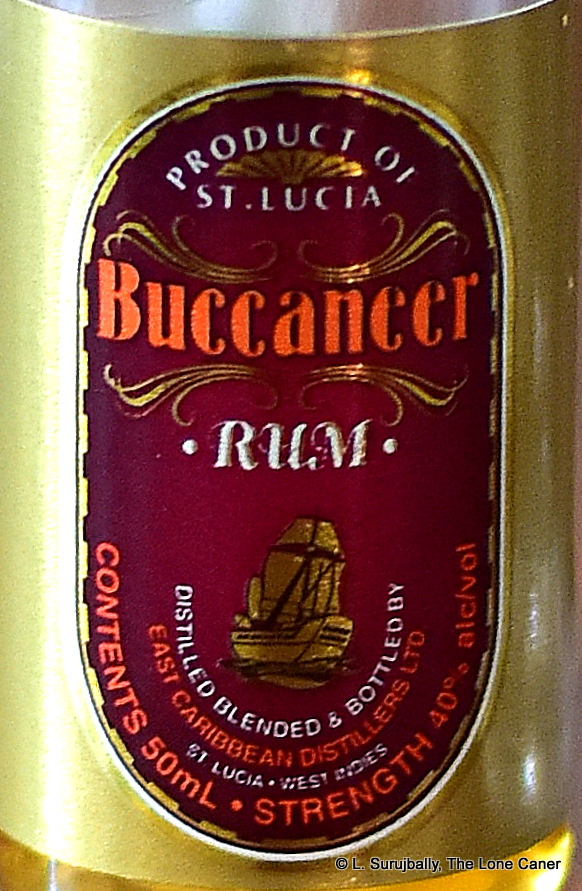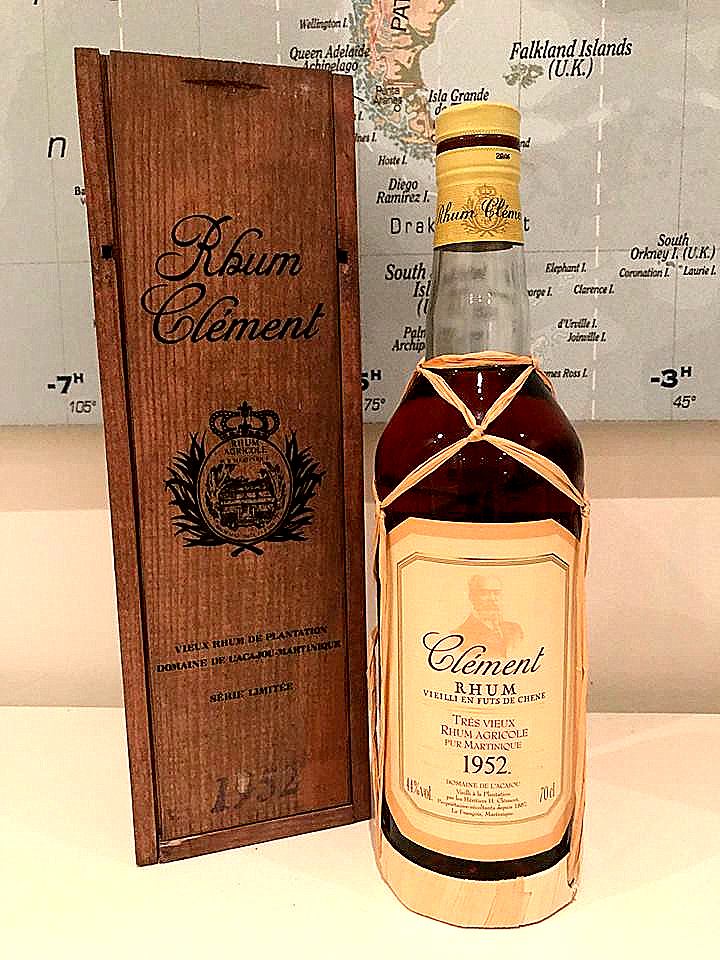 Rumaniacs Review #105 | 0678
Rumaniacs Review #105 | 0678
1952 – an eventful year. Queen Elizabeth II ascends to the throne; Black Saturday in Egypt, followed by the overthrow of King Farouk; the US election puts Ike in the White House; the first steps towards the EU were taken with the formation of the European Coal and Steel Community; television debuts in Canada; Charlie Chaplin is barred from re-entry to the US; “Mousetrap” opens in London (and never closes) – and in Martinique, Clément distills this rum and starts ageing it.
So here we are. We’ve arrived at the oldest rum that is within the blend of the Clément XO, the Millesime 1952, while remaining in the dark as to the proportions, or even the true ages of some of the rhums themselves (as noted in the 1970). Too bad, but that’s what happens when records are incomplete, people move on and memories fade. We take what we can.
When we go this far back in time, the AOC is a myth and we’re in the territory of rhums like the Bally 1929 or 1924 and the older St. James offerings like the 1932 and 1885. The importance of trying such products with a modern sensibility and palate is not so much to drink from the well of history – though of course that’s part of the attraction, which I would never deny – as to see how things have changed, how much they haven’t, and to understand how developments in technology and processing have made rums what they are today.
By that standard, what to make of this one? Short answer: different and well constructed — just don’t expect the clarity and crispness of a modern agricole.
Colour – Amber
Strength – 44% ABV
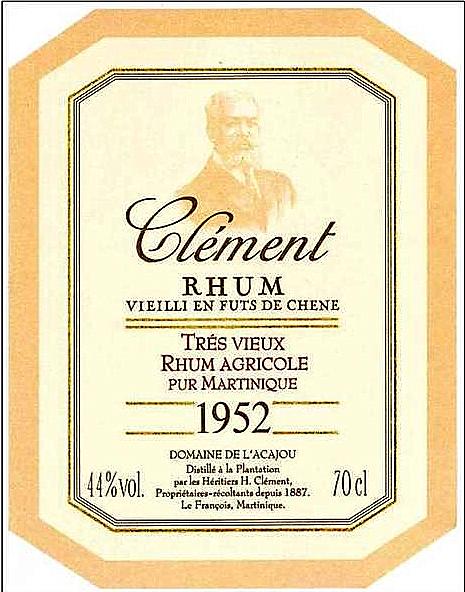 Nose – A combination of the sweet of the 1976 and the pungency of the 1970. Light red-wine- notes, fleshy fruits and almost no grassy or herbals aspects at all. Nougat, toblerone, white chocolate, coffee grounds, anise, all surprisingly and pleasantly crisp. Flowers and the faintest hint of salt. Also the mustiness of Grandma Caner’s old basement (where once I found a Damoiseau 1953, with which this thing shared quite a few similarities).
Nose – A combination of the sweet of the 1976 and the pungency of the 1970. Light red-wine- notes, fleshy fruits and almost no grassy or herbals aspects at all. Nougat, toblerone, white chocolate, coffee grounds, anise, all surprisingly and pleasantly crisp. Flowers and the faintest hint of salt. Also the mustiness of Grandma Caner’s old basement (where once I found a Damoiseau 1953, with which this thing shared quite a few similarities).
Palate – Thicker and fuller than expected, and pretty much lacking the lighter and more precise attributes of the other two. Fleshy red and orange fruits, like peaches, oranges, apricots. Ripe granny apples. Red olives, tobacco, licorice, brown sugar, a light brininess and even apple cider for some kick.
Finish – Short and dry. Salty and fruity, well balanced against each other, but admittedly it was rather unexceptional.
Thoughts – That it doesn’t fly apart under the impact of all these various competing flavours is to its credit, but tasted blind, it wasn’t my standout of the three Clément rhums. Unlike the light grassy crispness of the 1976 and 1970, I felt this one was literally more down-to-earth and musty and thicker. Clearly things were done different back in the day, and the Damoiseau ‘53 displayed similarly non-agricole characteristics. As a reviewer and taster, I much prefer today’s versions to be honest, but as a lover of antique things made in other eras, it’s hard to completely discount something with such a heritage.
(#678 | R105)(84/100)
Other notes
- Cyril of DuRhum has a lot of doubts about this rhum, not the least about the age claim of plus-or-minus forty (or even thirty) years. Even if it really was bottled in the early 1990s, it’s almost inconceivable that a rum could be aged in the tropics for so long without evaporating or being tannic beyond the point of drinkability. Clement makes no statement on the matter themselves. Note that unlike the other two rhums, this has no AOC notation on the label.
- Josh Miller in a 2016 review of the Clement XO on Distiller, remarked that the stocks of the 1952 were now exhausted and the XO would have to be reformulated, but no longer recalls the source. I’ve sent a few messages around to see if I can come up with more details.
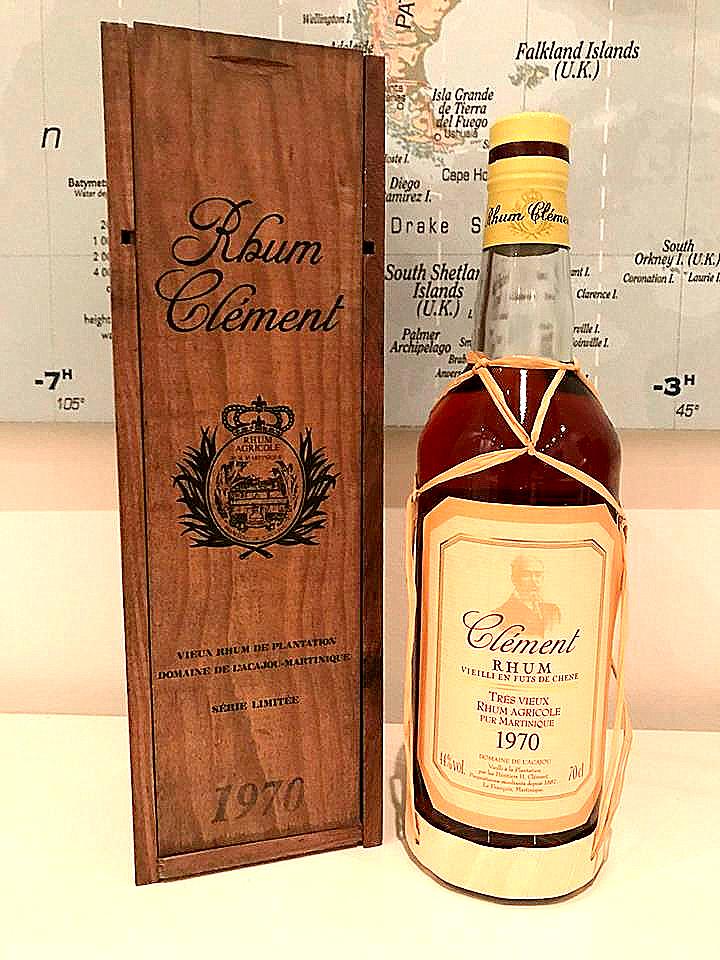 Rumaniacs Review #104 | 0677
Rumaniacs Review #104 | 0677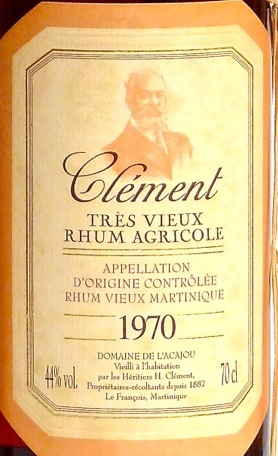 Another peculiarity of the rhum is the “AOC” on the label. Since the AOC came into effect only in 1996, and even at its oldest this rhum was done ageing in 1991, how did that happen? Cyril told me it had been validated by the AOC after it was finalized, which makes sense (and probably applies to the 1976 edition as well), but then, was there a pre-1996 edition with one label and a post-1996 edition with another one? (the two different boxes it comes in suggests the possibility). Or, was the entire 1970 vintage aged to 1991, then held in inert containers (or bottled) and left to gather dust for some reason? Is either 1991 or 1985 even real? — after all, it’s entirely possible that the trio (of 1976, 1970 and 1952, whose labels are all alike) was released as a special millesime series in the late 1990s / early 2000s. Which brings us back to the original question – how old is the rhum?
Another peculiarity of the rhum is the “AOC” on the label. Since the AOC came into effect only in 1996, and even at its oldest this rhum was done ageing in 1991, how did that happen? Cyril told me it had been validated by the AOC after it was finalized, which makes sense (and probably applies to the 1976 edition as well), but then, was there a pre-1996 edition with one label and a post-1996 edition with another one? (the two different boxes it comes in suggests the possibility). Or, was the entire 1970 vintage aged to 1991, then held in inert containers (or bottled) and left to gather dust for some reason? Is either 1991 or 1985 even real? — after all, it’s entirely possible that the trio (of 1976, 1970 and 1952, whose labels are all alike) was released as a special millesime series in the late 1990s / early 2000s. Which brings us back to the original question – how old is the rhum?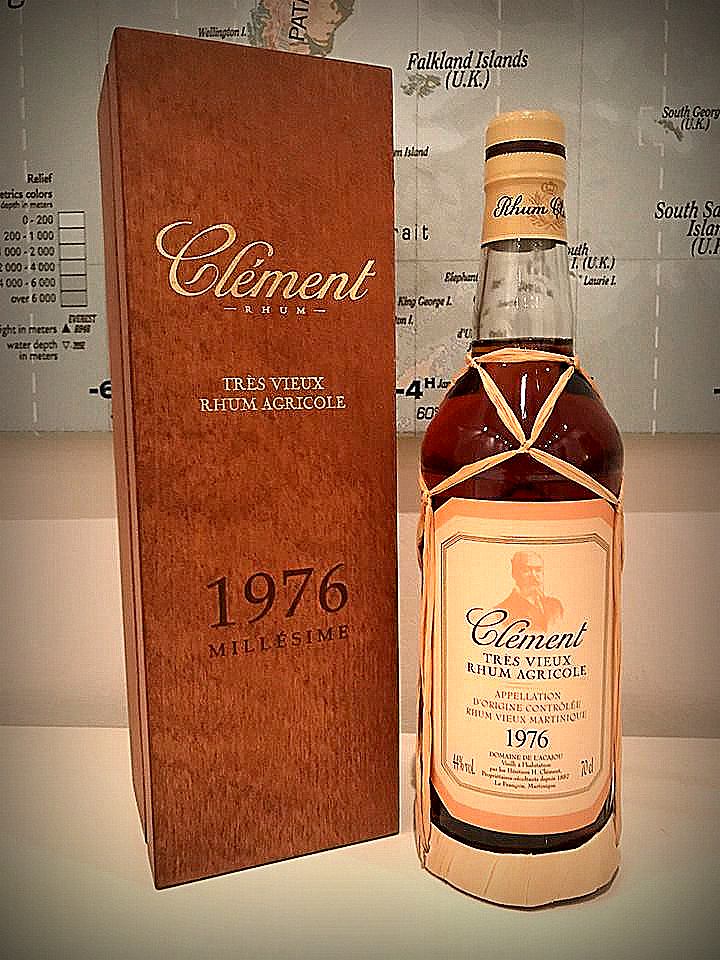 Rumaniacs Review #103 | 0676
Rumaniacs Review #103 | 0676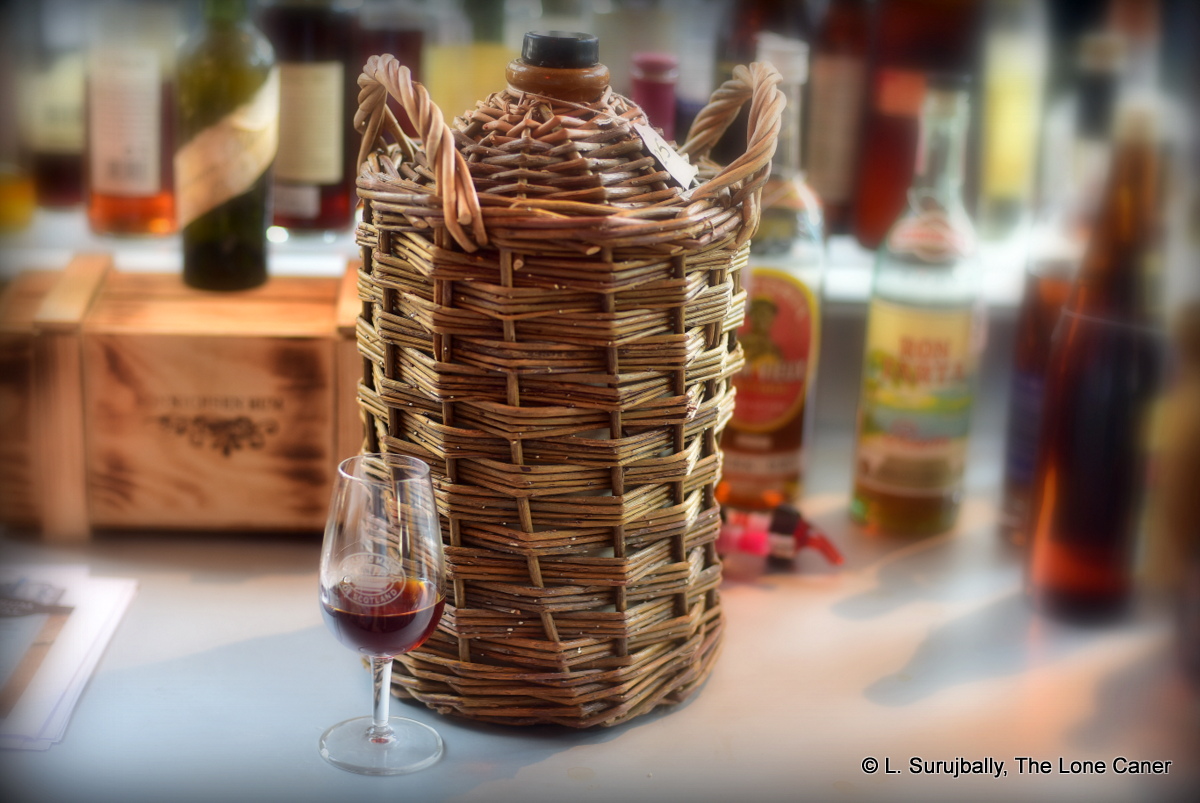
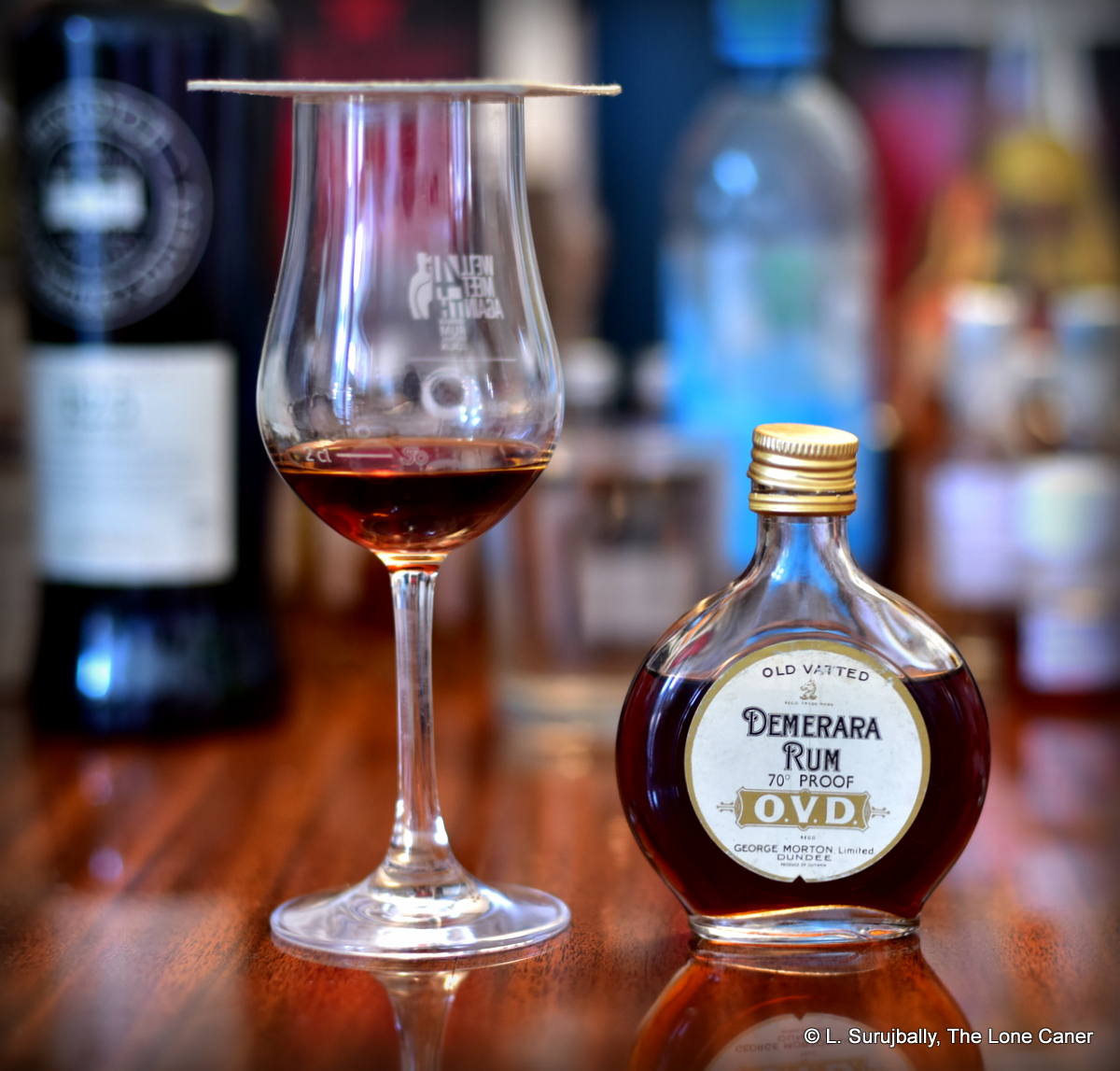
 This bottle notes George Morton, founded in 1838, as being located in Dundee which the OVD history page confirms as being the original offices. But a 1970s-dated Aussie listing for a 40% ABV OVD rum already shows them as being located in Glasgow, and a newer bottle label shows Talgarth Rd in London, so my Dundee edition has to be earlier. Lastly, an auction site lists a similar bottle from the 1970s with a label also showing Dundee, and a spelling of “Guyana”, so since the country became independent in 1966, I’m going to suggest the early 1970s is about right
This bottle notes George Morton, founded in 1838, as being located in Dundee which the OVD history page confirms as being the original offices. But a 1970s-dated Aussie listing for a 40% ABV OVD rum already shows them as being located in Glasgow, and a newer bottle label shows Talgarth Rd in London, so my Dundee edition has to be earlier. Lastly, an auction site lists a similar bottle from the 1970s with a label also showing Dundee, and a spelling of “Guyana”, so since the country became independent in 1966, I’m going to suggest the early 1970s is about right 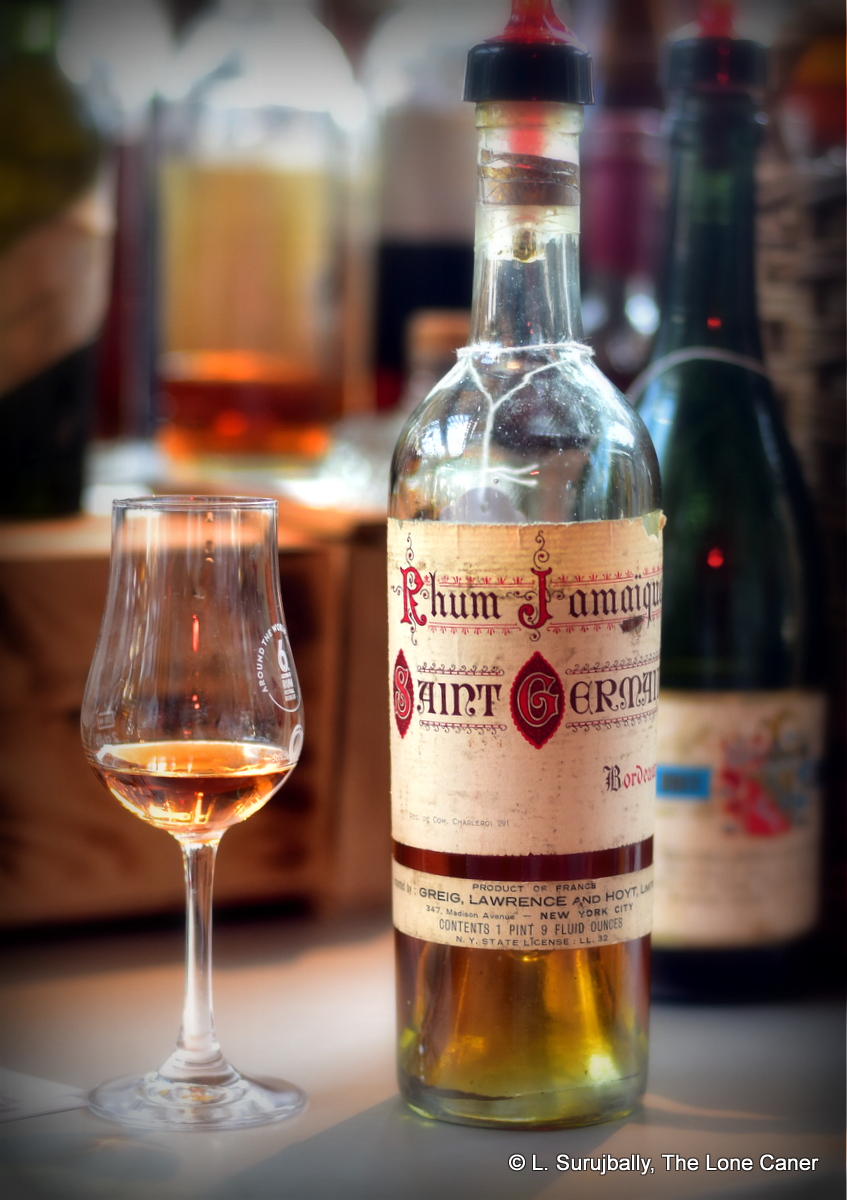
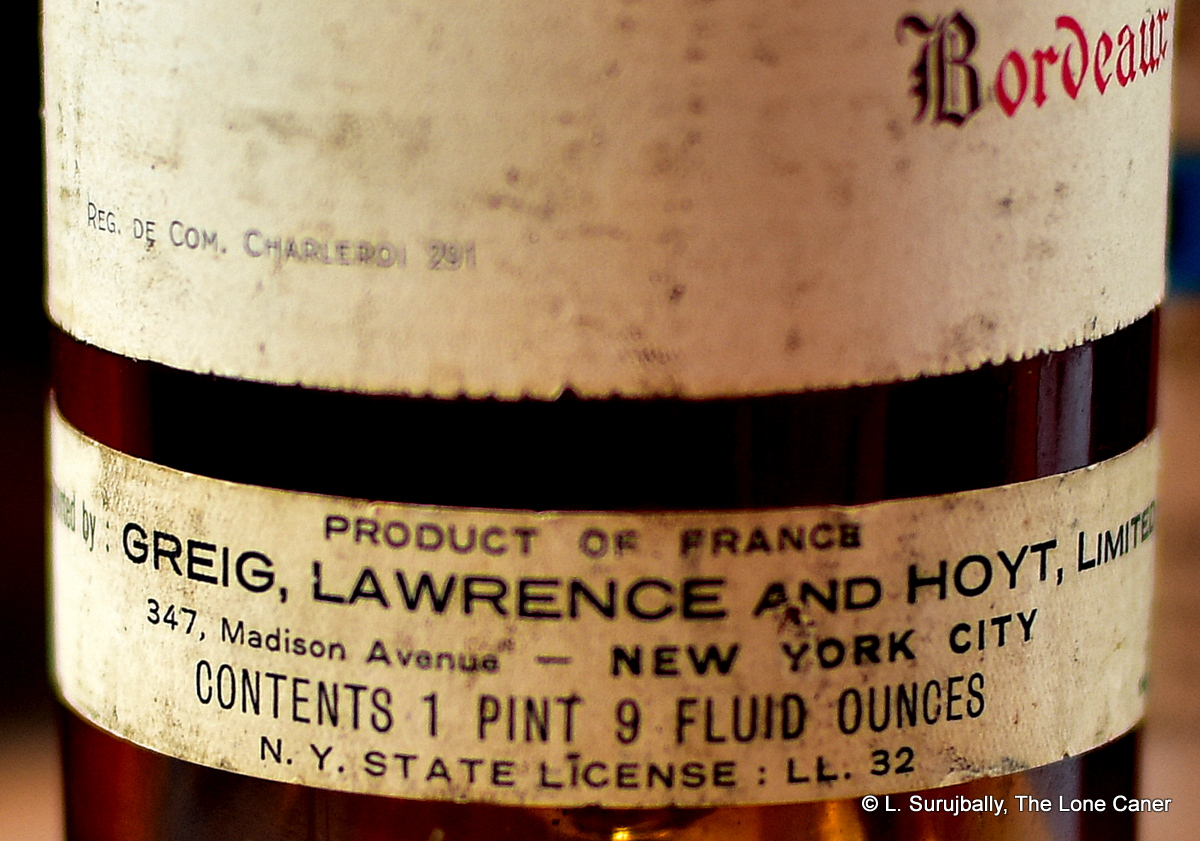
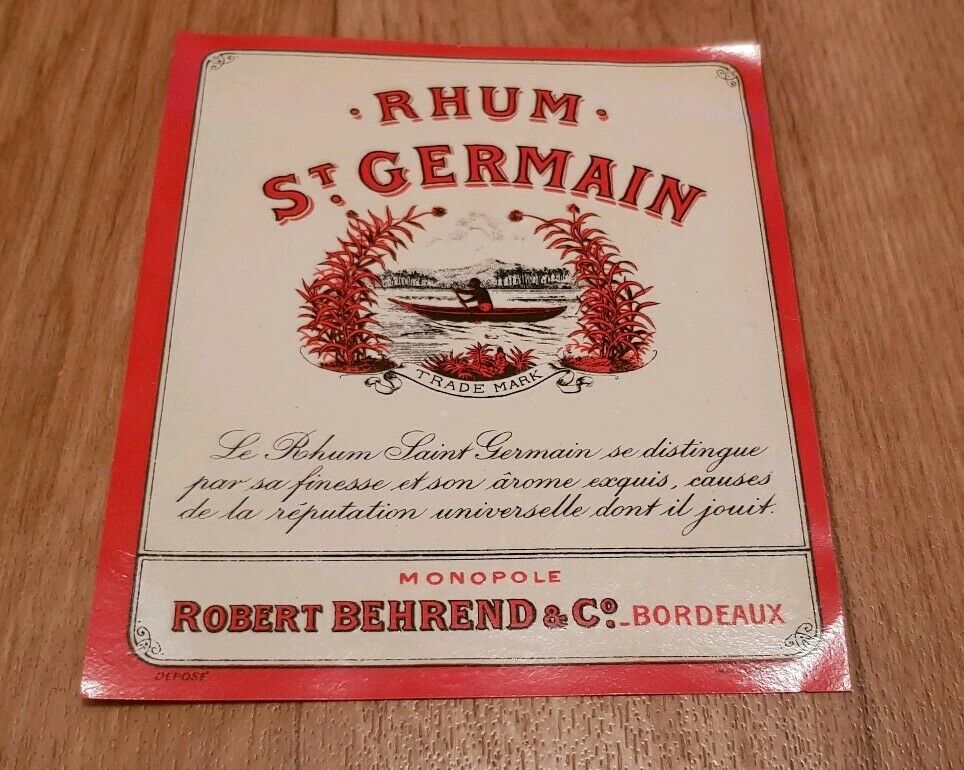
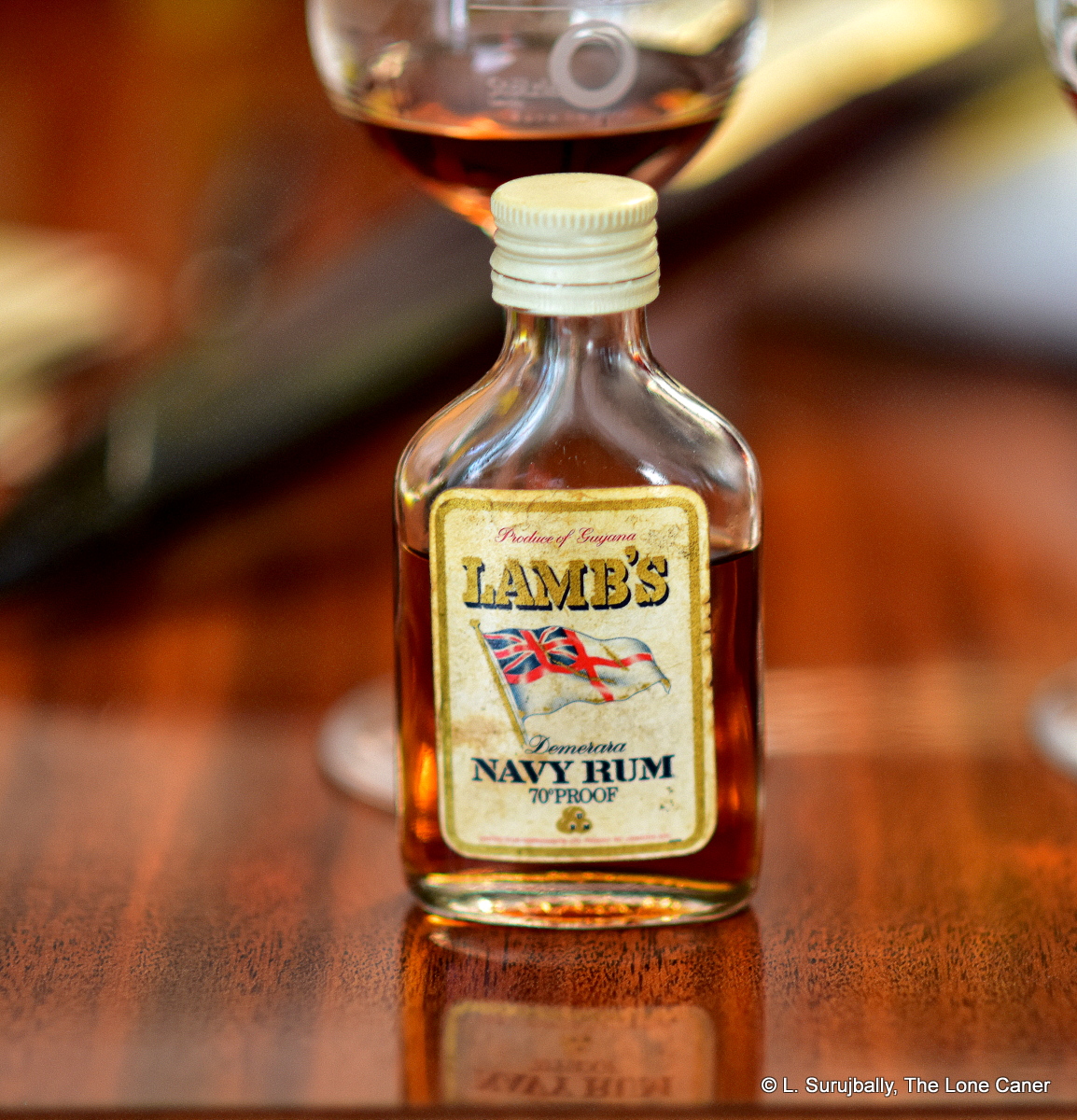
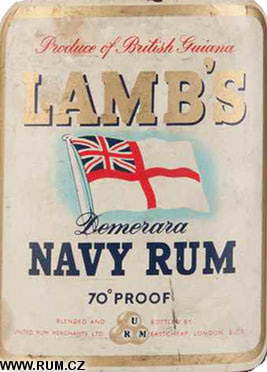 This bottle likely comes from the late 1970s: there is an earlier version noted as being from “British Guiana” that must have dated from the 1960s (Guyana gained independence in 1966) and by 1980 the UK largely ceased using degrees proof as a unit of alcoholic measure; and United Rum Merchants was taken over in 1984, which sets an absolute upper limit on its provenance (the URM is represented by the three barrels signifying Portal Dingwall & Norris, Whyte-Keeling and Alfred Lamb who merged in 1948 to form the company). Note also the “Product of Guyana” – the original blend of 18 different rums from Barbados, Guyana, Jamaica and Trinidad pioneered by Alfred Lamb, seems to have been reduced to Guyana only for the purpose of releasing this one.
This bottle likely comes from the late 1970s: there is an earlier version noted as being from “British Guiana” that must have dated from the 1960s (Guyana gained independence in 1966) and by 1980 the UK largely ceased using degrees proof as a unit of alcoholic measure; and United Rum Merchants was taken over in 1984, which sets an absolute upper limit on its provenance (the URM is represented by the three barrels signifying Portal Dingwall & Norris, Whyte-Keeling and Alfred Lamb who merged in 1948 to form the company). Note also the “Product of Guyana” – the original blend of 18 different rums from Barbados, Guyana, Jamaica and Trinidad pioneered by Alfred Lamb, seems to have been reduced to Guyana only for the purpose of releasing this one.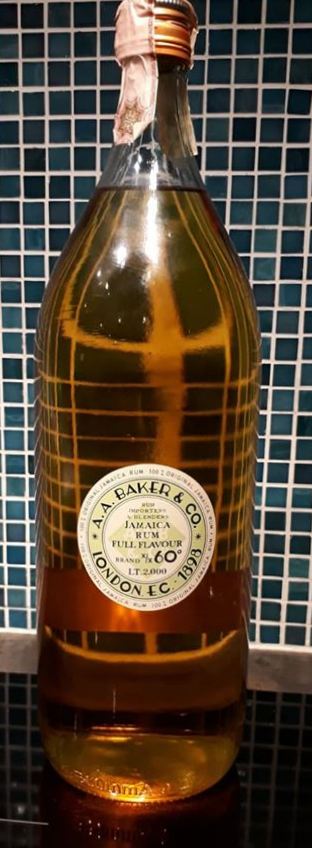
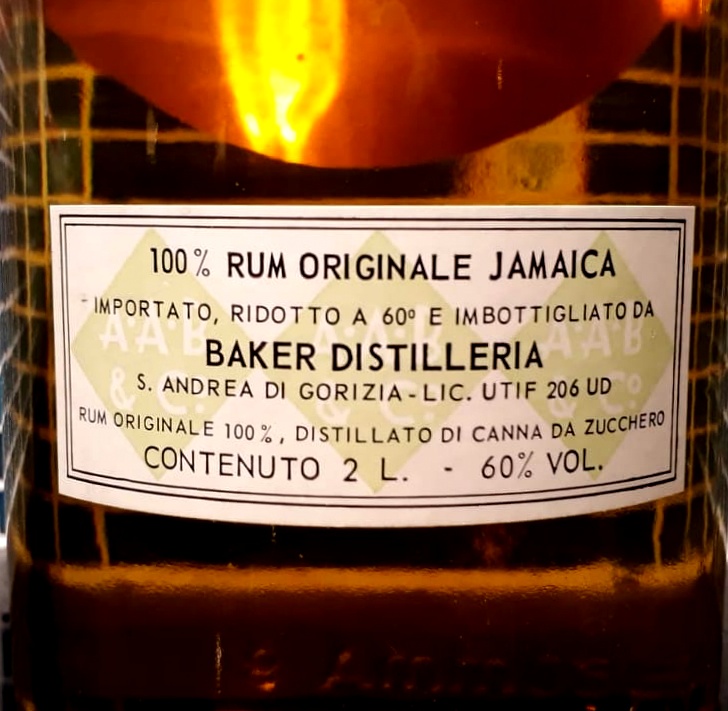
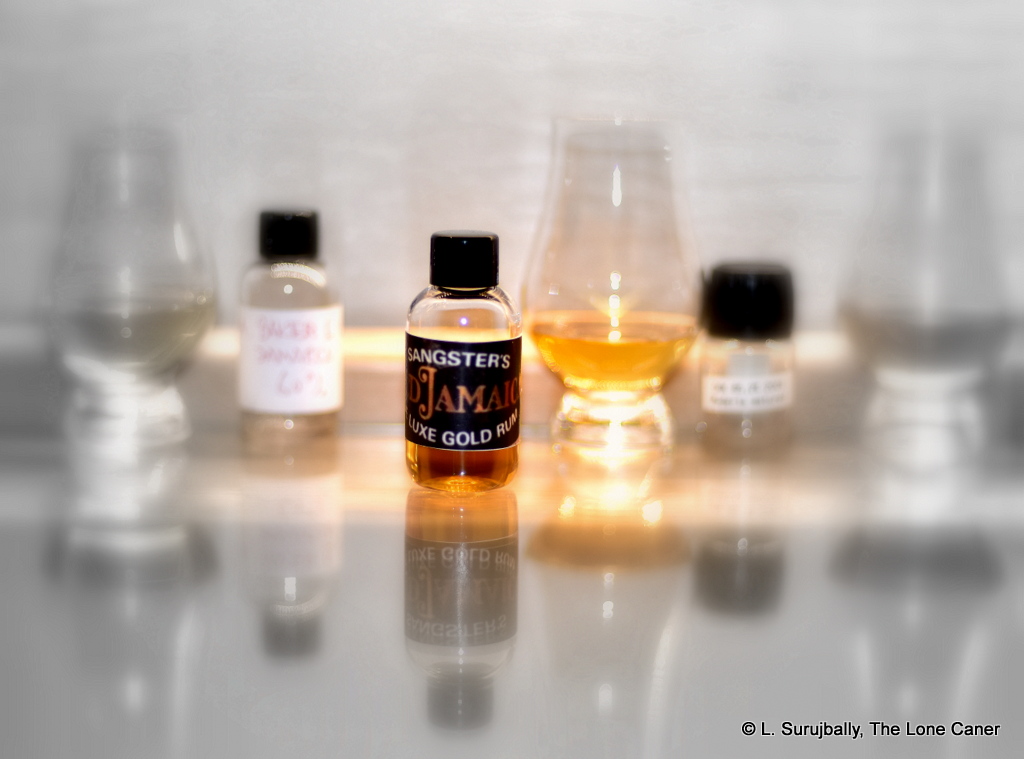
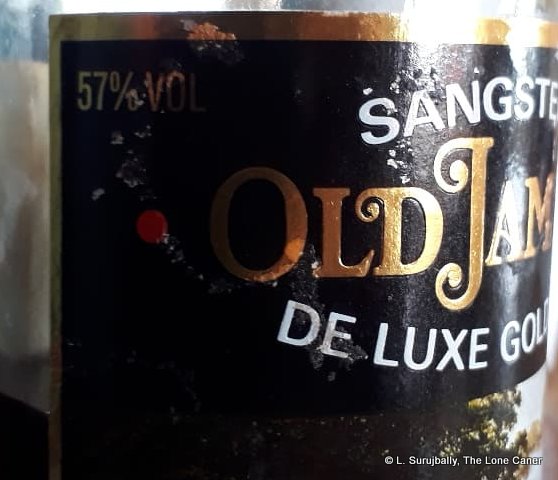 It is unknown from where he sourced his base stock. Given that this DeLuxe Gold rum was noted as comprising pot still distillate and being a blend, it could possibly be Hampden, Worthy Park or maybe even Appleton themselves or, from the profile, Longpond – or some combination, who knows? I think that it was likely between 2-5 years old, but that’s just a guess. References are slim at best, historical background almost nonexistent. The usual problem with these old rums. Note that after Dr. Sangster relocated to the Great Distillery in the Sky, his brand was acquired post-2001 by J. Wray & Nephew who do not use the name for anything except the rum liqueurs. The various blends have been discontinued.
It is unknown from where he sourced his base stock. Given that this DeLuxe Gold rum was noted as comprising pot still distillate and being a blend, it could possibly be Hampden, Worthy Park or maybe even Appleton themselves or, from the profile, Longpond – or some combination, who knows? I think that it was likely between 2-5 years old, but that’s just a guess. References are slim at best, historical background almost nonexistent. The usual problem with these old rums. Note that after Dr. Sangster relocated to the Great Distillery in the Sky, his brand was acquired post-2001 by J. Wray & Nephew who do not use the name for anything except the rum liqueurs. The various blends have been discontinued.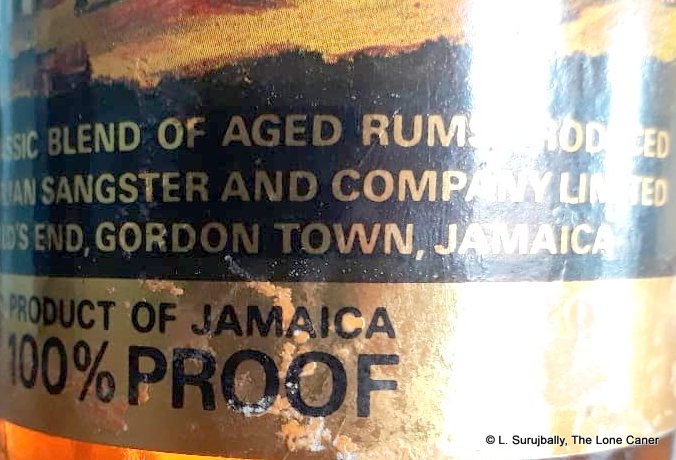 Nose – Opens with the scents of a midden heap and rotting bananas (which is not as bad as it sounds, believe me). Bad watermelons, the over-cloying reek of genteel corruption, like an unwashed rum strumpet covering it over with expensive perfume. Acetones, paint thinner, nail polish remover. That is definitely some pot still action. Apples, grapefruits, pineapples, very sharp and crisp. Overripe peaches in tinned syrup, yellow soft squishy mangoes. The amalgam of aromas doesn’t entirely work, and it’s not completely to my taste…but intriguing nevertheless It has a curious indeterminate nature to it, that makes it difficult to say whether it’s WP or Hampden or New Yarmouth or what have you.
Nose – Opens with the scents of a midden heap and rotting bananas (which is not as bad as it sounds, believe me). Bad watermelons, the over-cloying reek of genteel corruption, like an unwashed rum strumpet covering it over with expensive perfume. Acetones, paint thinner, nail polish remover. That is definitely some pot still action. Apples, grapefruits, pineapples, very sharp and crisp. Overripe peaches in tinned syrup, yellow soft squishy mangoes. The amalgam of aromas doesn’t entirely work, and it’s not completely to my taste…but intriguing nevertheless It has a curious indeterminate nature to it, that makes it difficult to say whether it’s WP or Hampden or New Yarmouth or what have you.  Finish – Shortish, dark off-fruits, vaguely sweet, briny, a few spices and musky earth tones.
Finish – Shortish, dark off-fruits, vaguely sweet, briny, a few spices and musky earth tones.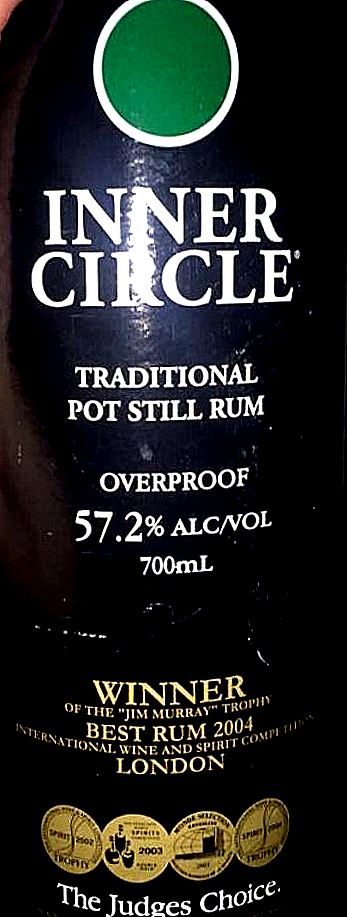 Rumaniacs Review # 096 | 0617
Rumaniacs Review # 096 | 0617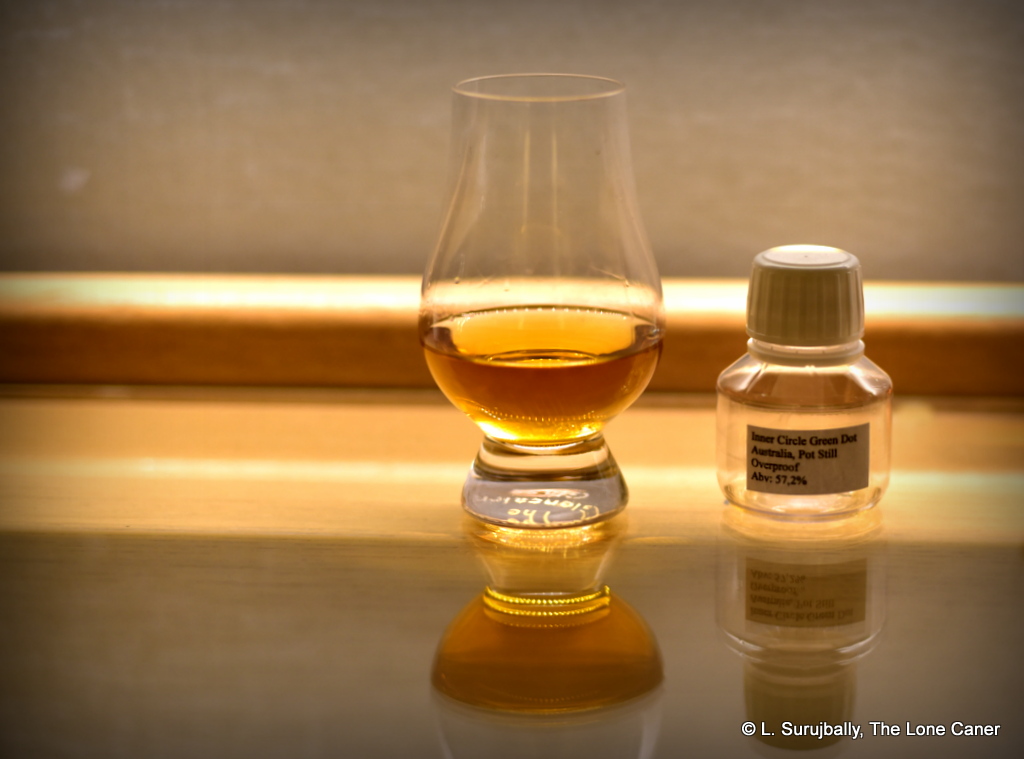
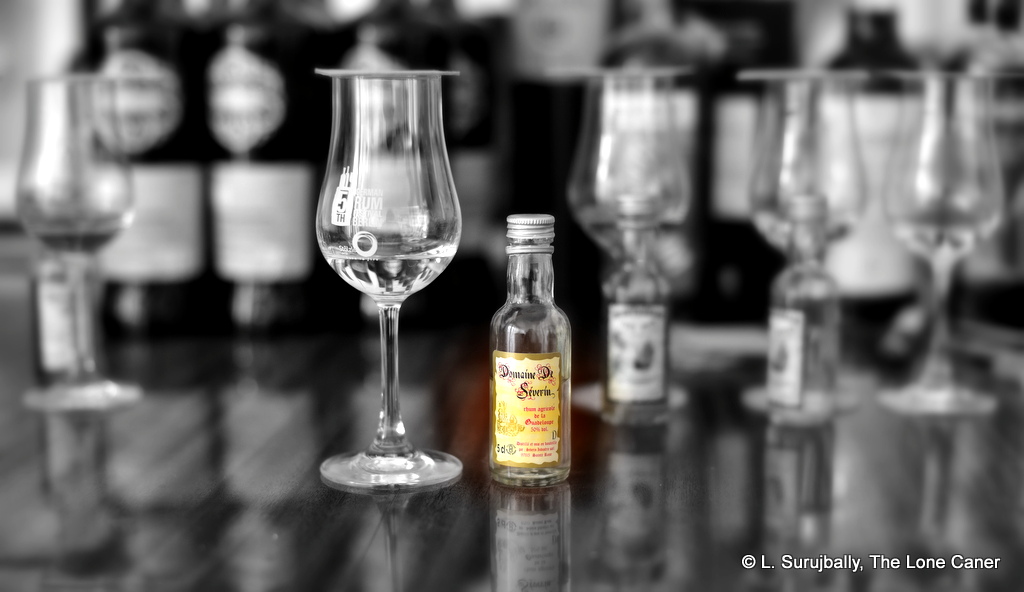
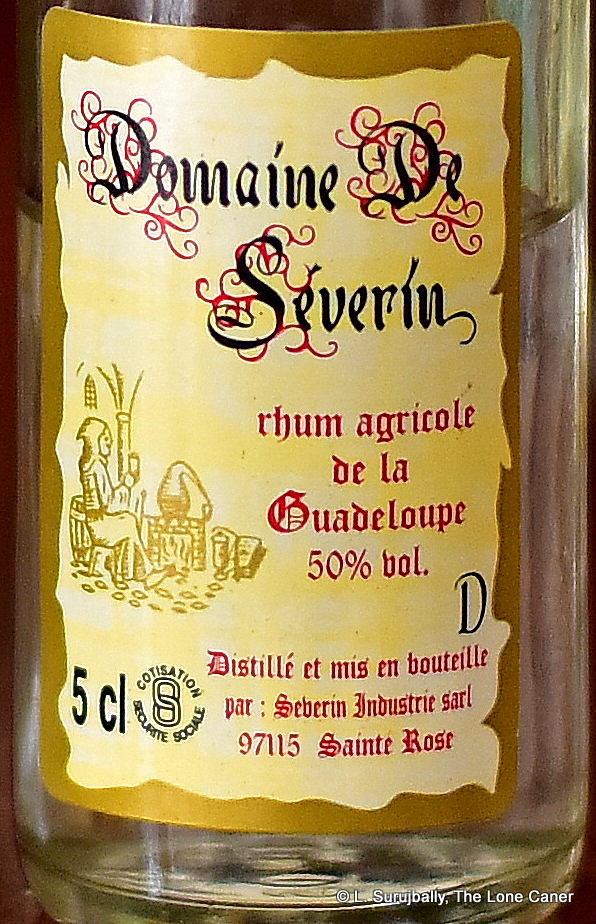 Nose – Starts off with plastic, rubber and acetones, which speak to its (supposed) unaged nature; then it flexes its cane-juice-glutes and coughs up a line of sweet water, bright notes of grass, sugar cane sap, brine and sweetish red olives. It’s oily, smooth and pungent, with delicate background notes of dill and cilantro lurking in the background. And some soda pop.
Nose – Starts off with plastic, rubber and acetones, which speak to its (supposed) unaged nature; then it flexes its cane-juice-glutes and coughs up a line of sweet water, bright notes of grass, sugar cane sap, brine and sweetish red olives. It’s oily, smooth and pungent, with delicate background notes of dill and cilantro lurking in the background. And some soda pop. 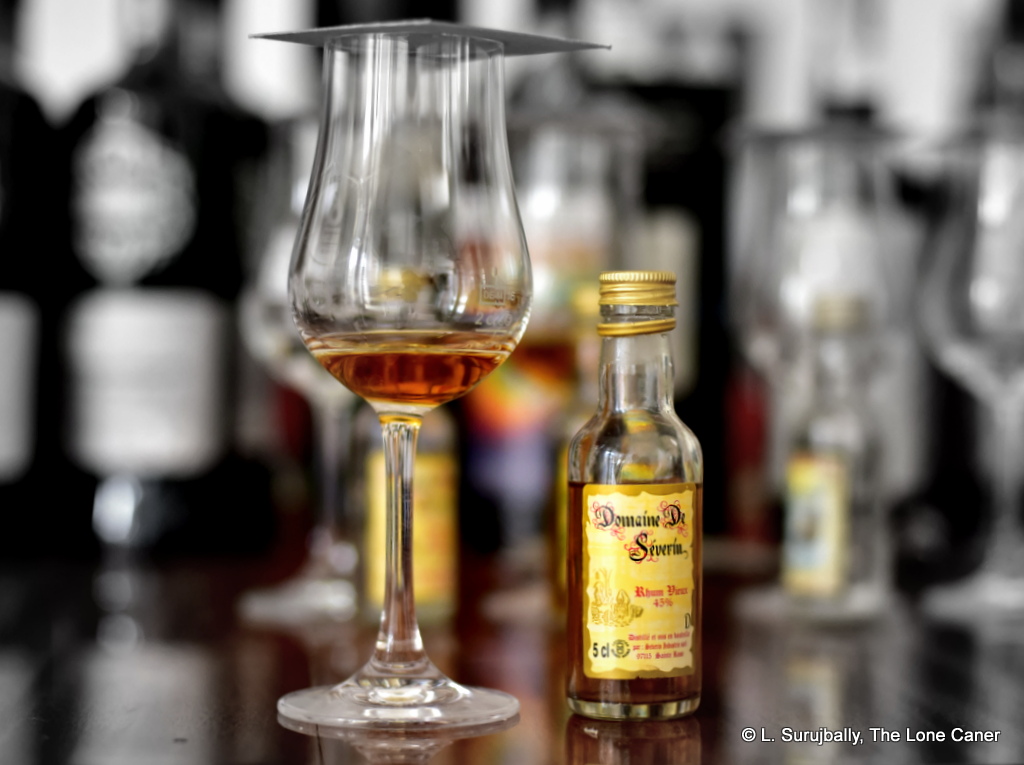
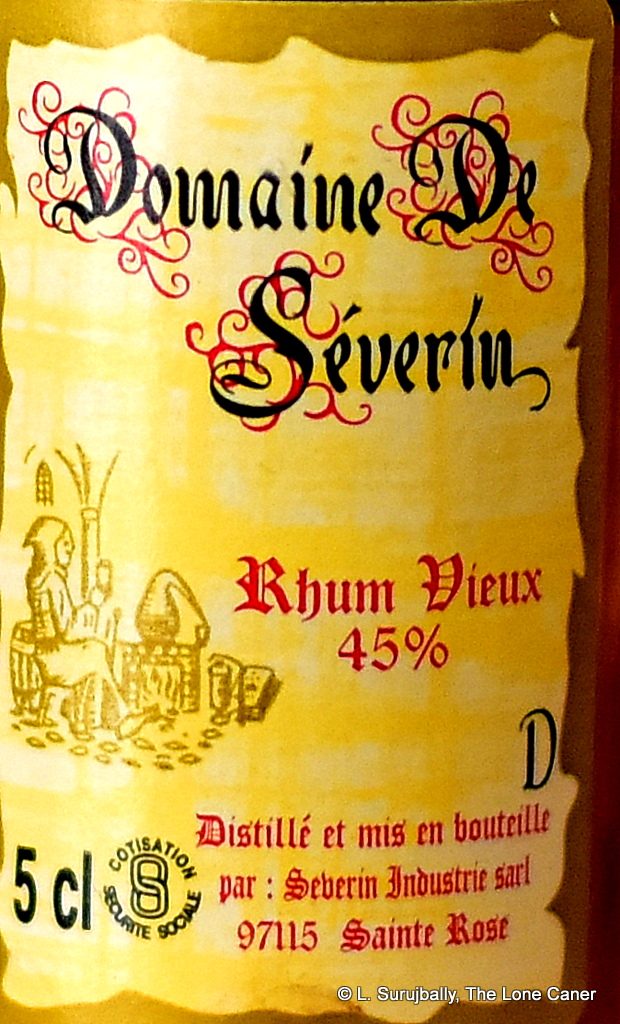 Colour – Gold
Colour – Gold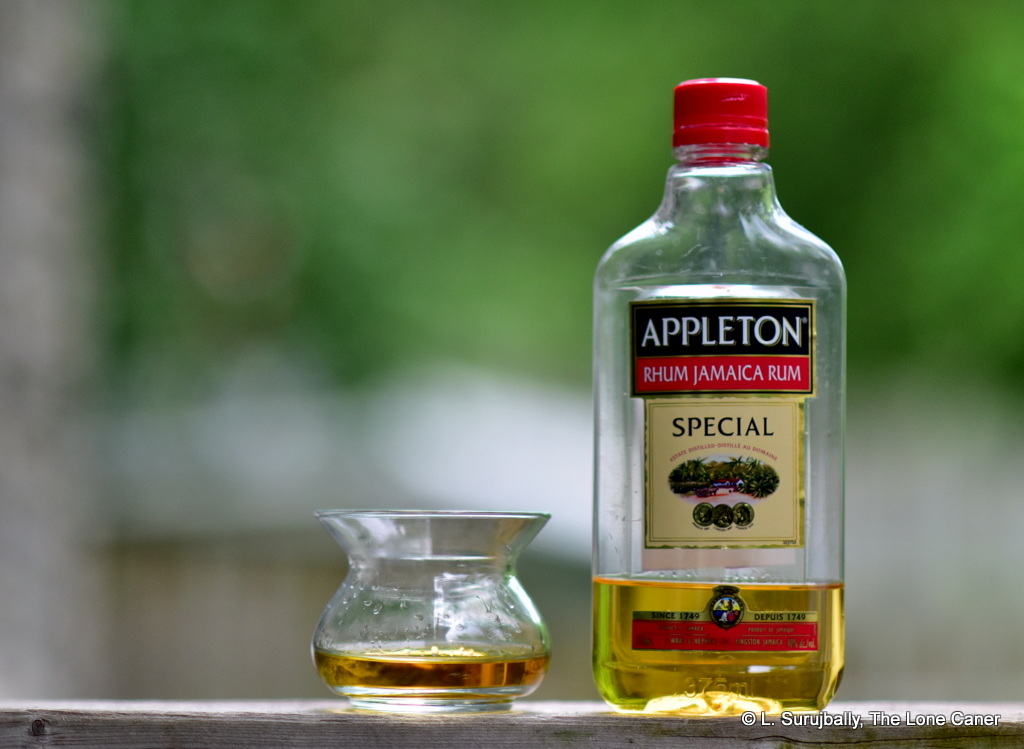
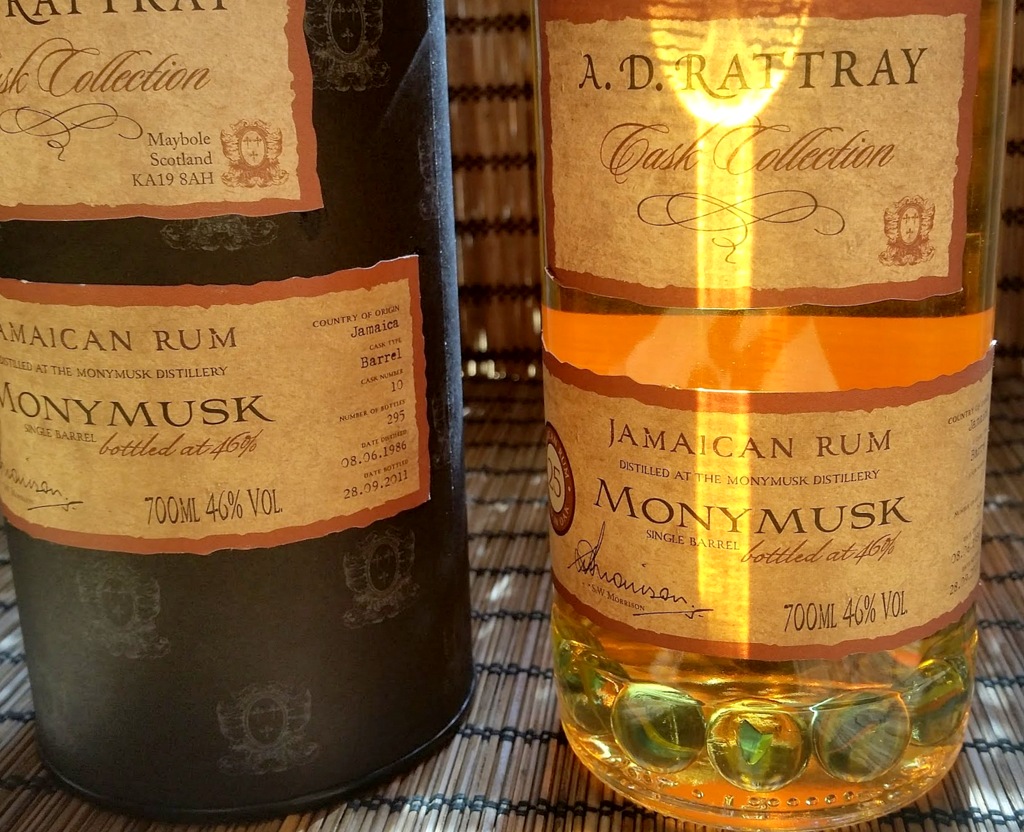
 Rumaniacs Review #091 | 0598
Rumaniacs Review #091 | 0598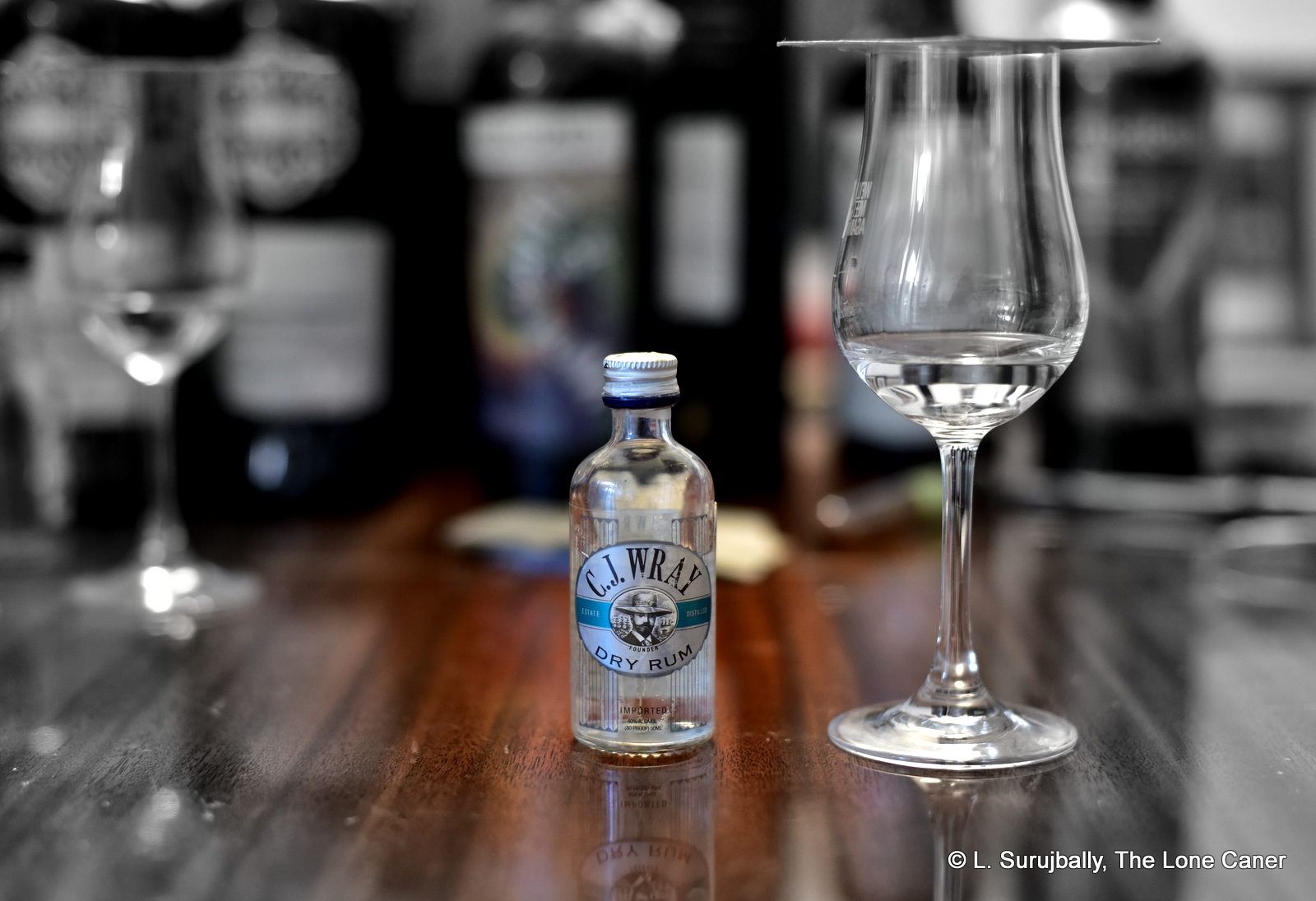
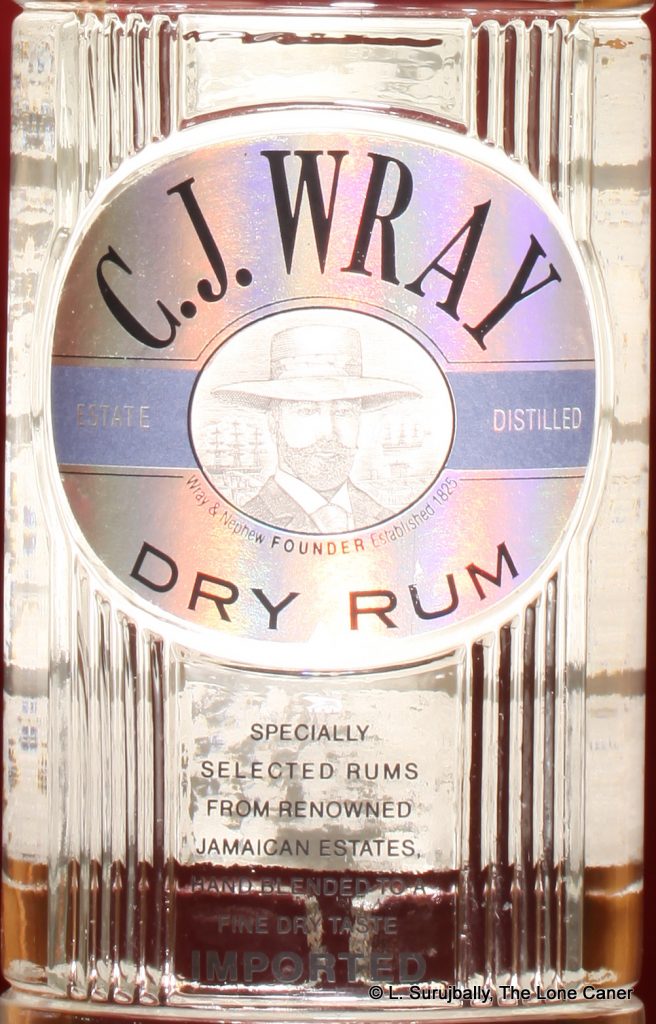 Technical details are murky. All right, they’re practically non-existent. I think it’s a filtered column still rum, diluted down to standard strength, but lack definitive proof – that’s just my experience and taste buds talking, so if you know better, drop a line. No notes on ageing – however, in spite of one reference I dug up which noted it as unaged, I think it probably was, just a bit.
Technical details are murky. All right, they’re practically non-existent. I think it’s a filtered column still rum, diluted down to standard strength, but lack definitive proof – that’s just my experience and taste buds talking, so if you know better, drop a line. No notes on ageing – however, in spite of one reference I dug up which noted it as unaged, I think it probably was, just a bit.
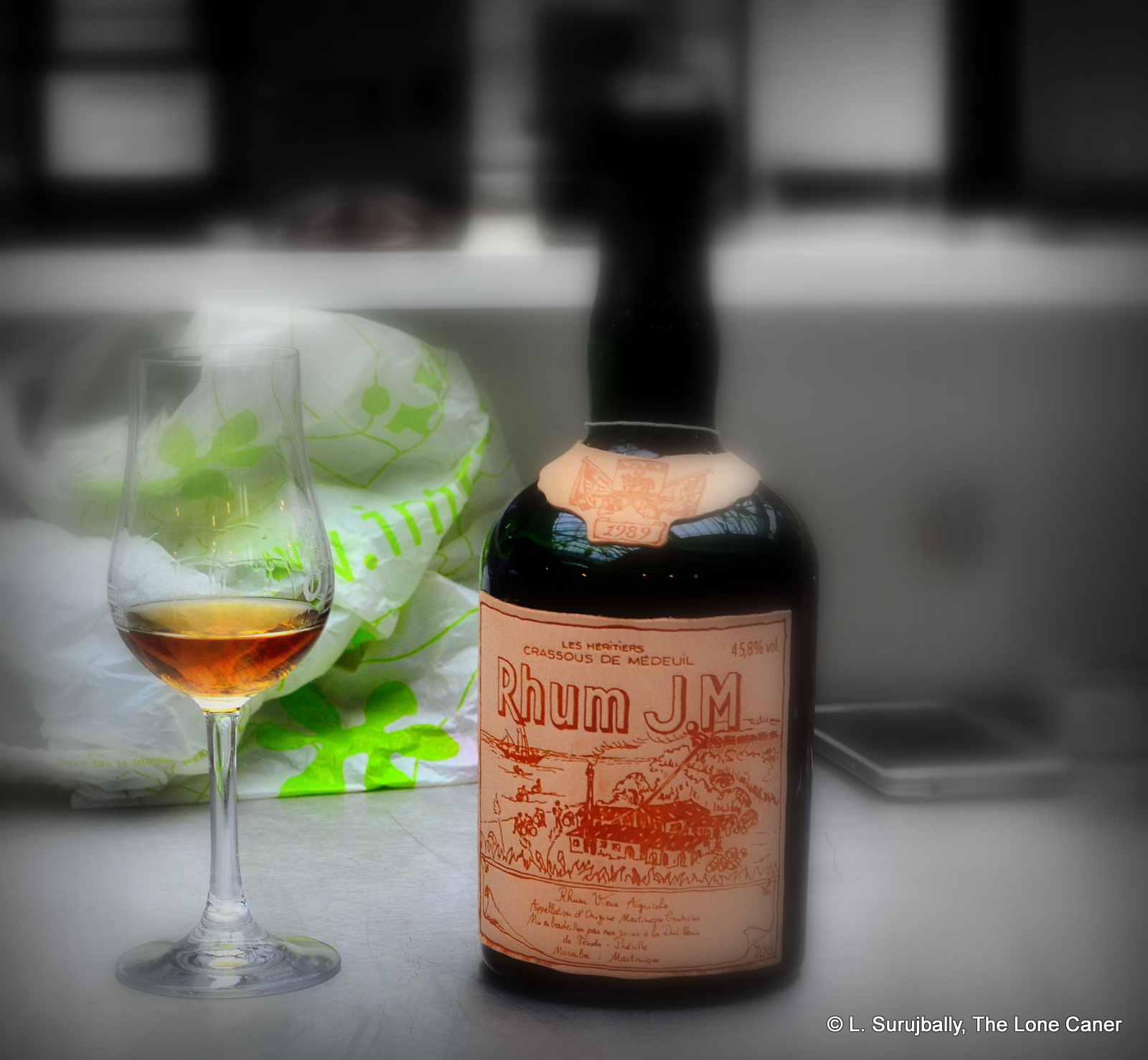
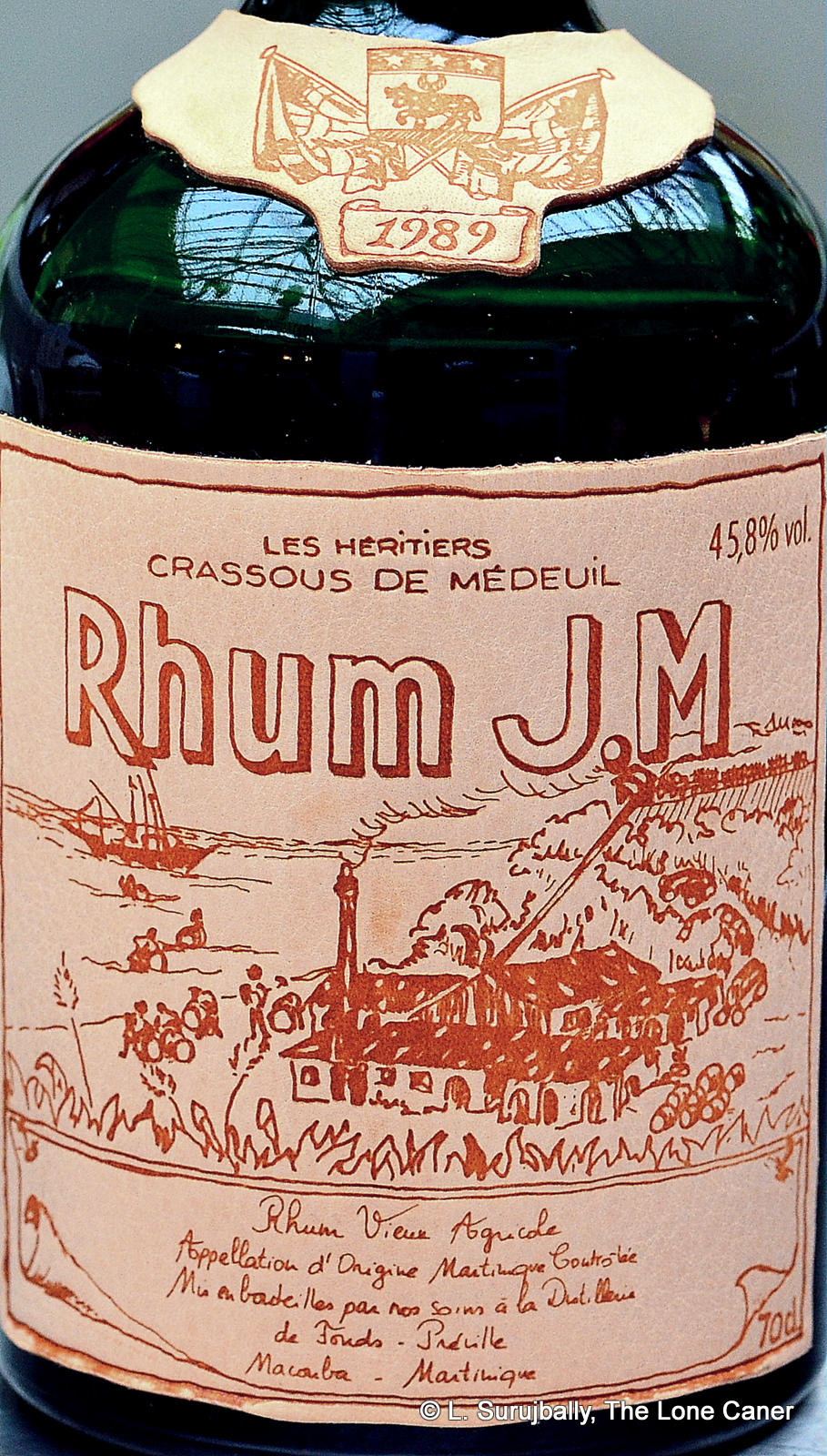
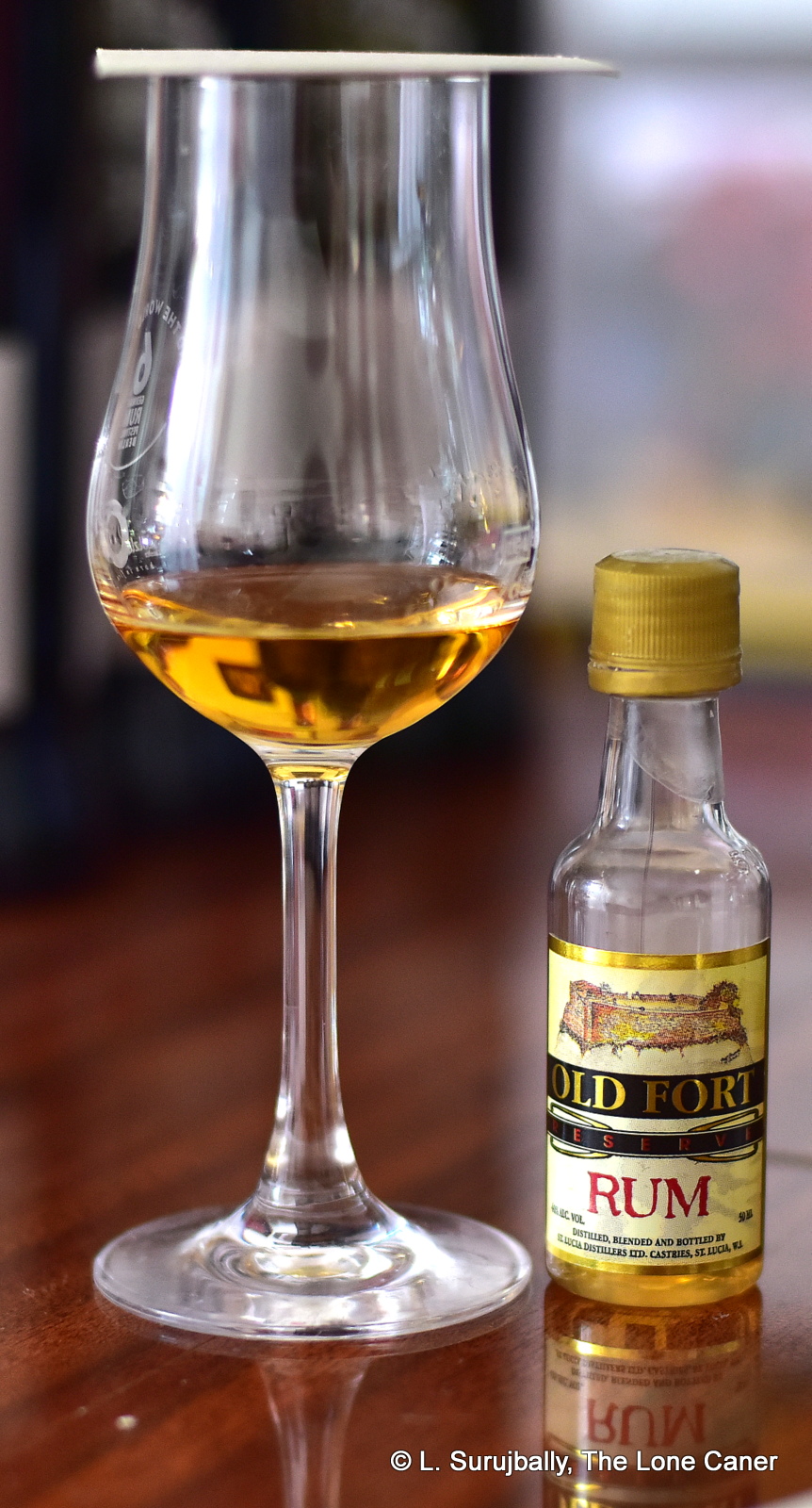 Rumaniacs Review #087 | 0574
Rumaniacs Review #087 | 0574